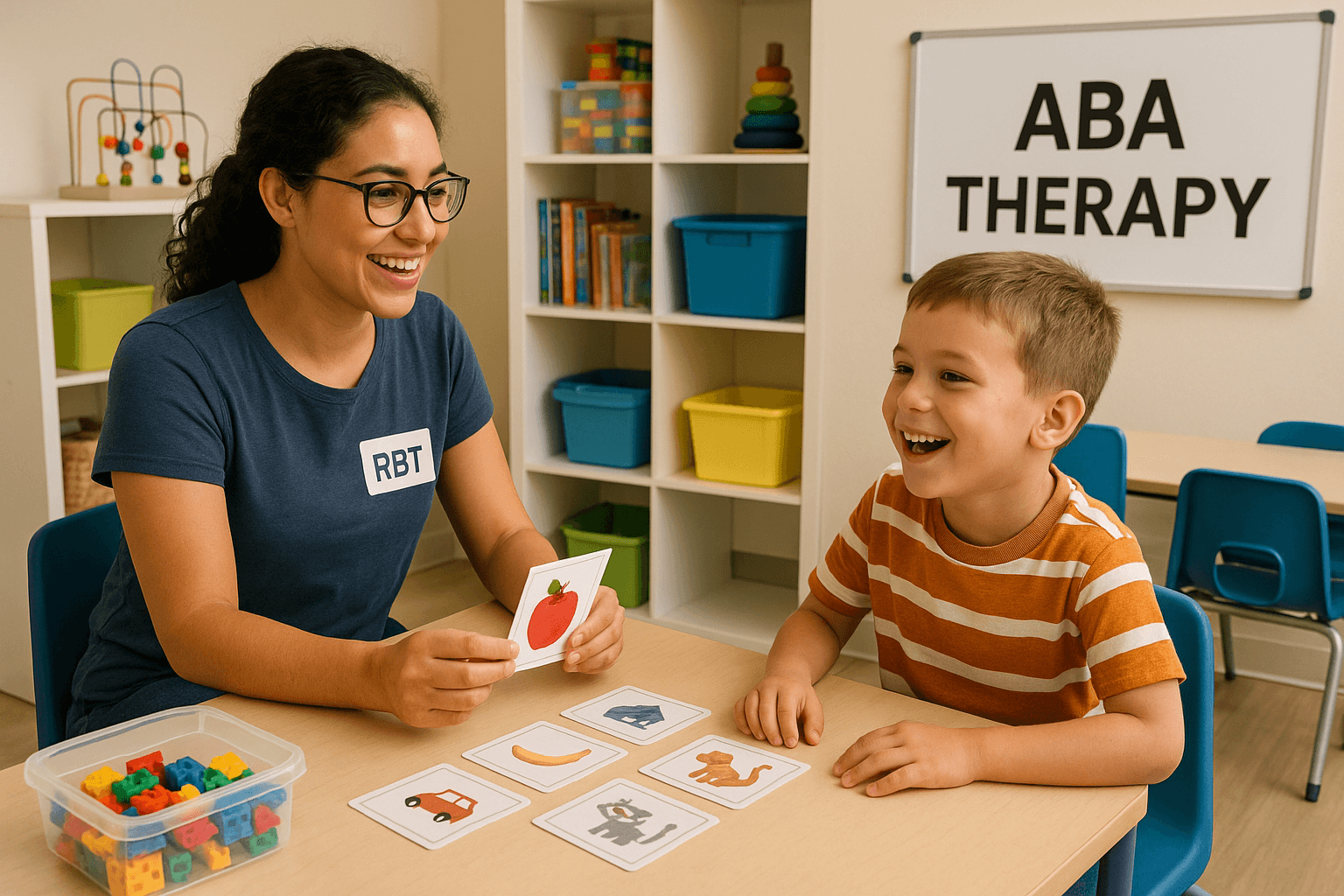Nutrition Tips for Kids with Autism: Best ABA Therapy
Parenting a child on the autism spectrum comes with its unique set of challenges, and one of the most common struggles is managing picky eating habits. For many kids with autism, rigid behaviors can lead to a limited diet, potentially affecting their nutrition and overall well-being. However, with patience, understanding, and tailored strategies with the help of the best ABA therapy providers, they can expand their food choices and ensure they receive adequate nutrition. This article delves into practical nutrition tips and approaches to help parents and caregivers navigate picky eating in autistic children.
Nutritional Concerns
Picky eating habits among kids with autism may result in nutritional deficiencies, affecting growth, development, and overall health. Concerns often involve insufficient intake of vital nutrients, imbalanced diets due to limited variety, and potential gastrointestinal issues linked to restricted food choices, even during the Best ABA therapy for kids.
Strategies to Encourage Healthy Eating
Gradual Exposure and Desensitization: Introduce new foods gradually, allowing the child to explore different textures, tastes, and colors at their own pace. Use a step-by-step approach, starting with small portions or incorporating preferred foods with new ones to increase acceptance.
Create a Visual Schedule or Food Chart: Visual aids can be beneficial for kids with autism. Create a chart or schedule displaying meal times and the foods served, providing a predictable routine and reducing anxiety around mealtimes.
Make Mealtime Fun and Interactive: Engage children in meal preparation or grocery shopping to create a sense of involvement and familiarity with different foods. Consider using colorful plates or fun utensils to make meals visually appealing.
Utilize Preferred Textures or Presentation: Adapt recipes or food presentations to align with the child's preferred textures or forms. For instance, if they prefer crunchy foods, offer vegetable sticks or fruits with different textures.
Incorporate Familiar Foods into New Recipes: Gradually introduce new foods into dishes with familiar favorites. For instance, blend vegetables into pasta sauce or puree fruits into smoothies.
Respect Food Preferences: While encouraging variety, respect the child's food preferences and avoid forceful feeding. Offer choices within healthy options to empower them and increase their willingness to try new foods.
Friendly Eating Environment: Create a calm and friendly eating environment by minimizing distractions, using preferred seating, and adjusting lighting or noise levels to reduce overload during meals.
Nutritional Support
Incorporating essential nutrients into a picky eater's diet is crucial. Here are some tips:
Focus on Nutrient-Dense Foods: Offer nutritious foods to compensate for a limited variety. To ensure a well-rounded diet, include lean proteins, whole grains, fruits, vegetables, and healthy fats.
Consider Supplements: Consult with a healthcare professional to determine if supplements are necessary to address specific nutritional deficiencies. Omega-3 fatty acids, multivitamins, or specific vitamins and minerals might be recommended.
Encourage Hydration: Ensure an adequate intake of water throughout the day. Experiment with different cups or bottles it affect their drinking habits.
Addressing Specific Challenges
Sensitivities:
Kids with autism often have sensitivities that affect their eating habits. Here are strategies to tackle these challenges:
Texture Modification: Some children might struggle with certain textures. Experiment with food preparation methods like blending, pureeing, or cooking to alter textures and make them more palatable.
Gradual Exposure to New Textures: Introduce new textures gradually, starting with those similar to their preferred textures. For instance, if a child prefers crunchy foods, introduce progressively foods with similar crunchiness but different tastes.
Offer Choices within Textures: If a child dislikes a particular texture, offer choices within that texture category. For example, if they prefer crunchy foods, offer a variety of crunchy fruits or vegetables.
Routine and Sameness
Kids with autism often seek comfort in routine and sameness. Disrupting their routine during mealtimes might lead to resistance. Strategies to manage this include:
Predictable Meal Schedule: Stick to a consistent meal schedule to provide predictability. Inform the child about upcoming meals, reducing anxiety around unexpected changes.
Gradual Changes: Introduce changes slowly. For instance, if the child prefers a specific food, gradually transition to a healthier version.
Visual Aids for Change: Use visible schedules or charts to illustrate upcoming changes in the diet, preparing the child for new foods or modifications in their meal routine.
Anxiety and Stress
Kids with autism might experience anxiety or stress around mealtime, affecting their willingness to try new foods. Strategies to alleviate this include:
Relaxed Meal Environment: Create a calm and relaxed atmosphere during meals. Minimize distractions and maintain a peaceful setting to reduce anxiety.
Positive Reinforcement: Use positive reinforcement techniques like praise or rewards when the child tries new foods or demonstrates positive eating behaviors.
Modeling and Peer Influence: Encourage eating with peers or family members who have positive eating habits. Children often mimic behavior, and observing others trying new foods might encourage them to do the same.
Seeking Professional Guidance
Consulting healthcare professionals specializing in autism and nutrition can provide tailored guidance. They can:
Assess Nutritional Needs: Conduct a thorough assessment to identify nutritional deficiencies and recommend appropriate dietary adjustments or supplements.
Offer Individualized Strategies: Provide personalized strategies based on the child's preferences, nutritional requirements, and eating behaviors.
Collaborate with Therapists: Work collaboratively with occupational or behavioral therapists to develop comprehensive strategies addressing nutritional and behavioral aspects.
Long-Term Approach
Overcoming picky eating in kids with autism is a gradual process that requires consistency and patience. Celebrate small victories and progress made toward diversifying their diet. Remember, it's essential to focus not only on the quantity of food but also on the quality and variety.
Conclusion
Picky eating habits in kids with autism can pose challenges, but with tailored strategies and a supportive environment, progress is achievable. Understanding their sensitivities, respecting their routines, and addressing anxiety around mealtime are crucial steps toward expanding their food choices. Seeking professional guidance and taking a long-term approach can significantly impact a child's nutritional intake and overall well-being.
By employing patience, consistency, and a holistic approach, parents and caregivers can empower kids on the autism spectrum to embrace a broader range of foods, ensuring they receive the essential nutrition necessary for their growth and development. If you're seeking personalized guidance or further support in managing your child's dietary needs, consider contacting our team of experts at Coachella Valley Lighthouse for the best ABA Therapy.
Our professionals specialize in assisting families with kids on the autism spectrum and can provide individualized strategies to navigate picky eating and promote healthy eating habits. Remember, every step toward expanding your child's diet is toward their overall well-being and development.
FAQs
Why are kids with autism often picky eaters?
Kids with autism frequently experience sensitivities, making them sensitive to specific tastes, textures, colors, or smells. This sensitivity can lead to a limited food preference. Additionally, the need for routine and sameness can result in resistance to trying new foods.
How can we introduce new foods to a kids with autism?
Introduce new foods gradually, starting with small portions or incorporating them alongside familiar favorites. Consider using visual aids or creating a predictable meal schedule to reduce anxiety around fresh foods.
What if my child refuses to try new foods?
Respect your child's pace and avoid forceful feeding. Offer choices within healthy options and celebrate small victories when they show interest or willingness to try new foods. Consistency and patience are key.
Should I consider supplements for my picky eater with autism?
Consult with a healthcare professional or a nutritionist providing the best ABA Therapy to assess if supplements are necessary to address specific nutritional deficiencies. They can guide appropriate supplements or dietary adjustments.
How can I create a friendly eating environment?
Minimize distractions during meals, adjust lighting or noise levels, and provide a comfortable seating arrangement. Use preferred utensils or dishes and maintain a calm atmosphere to reduce overload.
What role does routine play in managing picky eating habits?
Routine provides predictability and comfort for kids with autism. Establish a consistent meal schedule and introduce changes gradually to allow them to adapt to new foods or modifications.
How long does it take to expand a picky eater's diet?
Every child is unique, and progress varies. It's essential to be patient and persistent. Celebrate small victories and focus on gradual improvements rather than quick changes.
What if my child has food allergies or intolerances?
If your child has specific food allergies or intolerances, work closely with healthcare professionals to develop a tailored diet plan that accommodates these restrictions while ensuring adequate nutrition.
Why are kids with autism often picky eaters?
Kids with autism frequently experience sensitivities, making them sensitive to specific tastes, textures, colors, or smells. This sensitivity can lead to a limited food preference. Additionally, the need for routine and sameness can result in resistance to trying new foods.
How can I introduce new foods to a child with autism?
Introduce new foods gradually, starting with small portions or incorporating them alongside familiar favorites. Consider using visual aids or creating a predictable meal schedule to reduce anxiety around fresh foods.
What if my child refuses to try new foods?
Respect your child's pace and avoid forceful feeding. Offer choices within healthy options and celebrate small victories when they show interest or willingness to try new foods. Consistency and patience are key.











